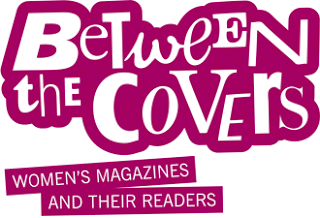Did you know the first women’s magazine was published in 1693? It was called The Ladies’ Mercury and was a spinoff from another periodical called The Athenian Mercury, which published the first advice columns. The Ladies’ Mercury was only published for four weeks, however, and every other women’s magazine was just as short lived until the Industrial Revolution.
As more and more factories opened in British cities, increasing numbers of working-class women chose not to enter domestic service, and work in factories instead, where the conditions were better. Middle-class women, whose families could not afford to pay their servants better, suddenly found themselves having to run households and do cleaning, cooking, and other domestic work themselves, things which they would have never been taught by their mothers. This is where women’s magazines took off – they were filled with advice and instructional articles aimed at these women to help them manage their new roles.
 As increasing numbers of women became literate, the numbers of women’s magazines widened and the topics featured became more diverse. At The Women’s Library, a couple of weeks ago, I visited the current exhibition Between the Covers: Women’s Magazines and their Readers, and I saw examples of these early magazines: one for Christian women, with articles and columns mixed in with hymn lyrics and passages from the Bible; a couple of magazines for burgeoning feminists; magazines which featured recipes and maths problems within the same covers; magazines the size of large books; and flimsy pamphlets originally costing a fraction of a penny. There are also plenty of examples from the 20th and 21st centuries on display, including a wall featuring covers from every edition of Cosmopolitan published one month in 2008. This was really interesting – most of the front-cover models were white, some of their poses were eerily similar, and only three of the women were smiling. The only grin that looked genuine belonged to the woman on Cosmo Taiwan. Most of the headlines mentioned sex, and the more modestly the model was dressed, the more she stood out – there were a lot of dresses cut in a V to the navel that month!
As increasing numbers of women became literate, the numbers of women’s magazines widened and the topics featured became more diverse. At The Women’s Library, a couple of weeks ago, I visited the current exhibition Between the Covers: Women’s Magazines and their Readers, and I saw examples of these early magazines: one for Christian women, with articles and columns mixed in with hymn lyrics and passages from the Bible; a couple of magazines for burgeoning feminists; magazines which featured recipes and maths problems within the same covers; magazines the size of large books; and flimsy pamphlets originally costing a fraction of a penny. There are also plenty of examples from the 20th and 21st centuries on display, including a wall featuring covers from every edition of Cosmopolitan published one month in 2008. This was really interesting – most of the front-cover models were white, some of their poses were eerily similar, and only three of the women were smiling. The only grin that looked genuine belonged to the woman on Cosmo Taiwan. Most of the headlines mentioned sex, and the more modestly the model was dressed, the more she stood out – there were a lot of dresses cut in a V to the navel that month!I found this exhibition fascinating. It isn’t arranged chronologically; instead it is laid out in several sections, so you can compare magazines through the ages and their attitudes towards the lives of women, how they dealt with the need to feature advertisements, and how developments in technology have changed the way they are produced and read. It’s clear that in recent times adult women’s magazines have become a lot less political, although magazines for teenage girls have definitely improved – the first were entirely devoted to idolising pop stars and silly romantic stories such as ‘Love in the Launderette’.
As well as the magazines on display, there are several interactive features of this exhibition. You can listen to interviews with various women involved in publishing magazines today, play a game to see if you can guess the magazine from its headlines (I only got one right!), answer a ‘How Liberated Are You?’ quiz from a 1978 edition of Cosmopolitan, and watch Talking Magazines, a film featuring a range women from Tower Hamlets (a borough of London) talk about the magazines they read and how they feel about them. There is also a reading area stocked with magazines from the past and present, including a few handmade zines and foreign titles. The Women’s Library has an enormous collection of magazines, so although most of the items in the exhibition are behind glass, there are many more available in the reading room upstairs (free to join and use) that you can actually touch and properly read.
I really enjoyed visiting Between the Covers, I totally geeked out and spent hours going around and looking at everything. I would recommend it to everyone who has ever loved or hated a women’s magazine, and most especially to bloggers – lots of the questions this exhibition raises are relevant to us.
Readers who live in London, or who will be visiting before 29th August 2009, should definitely pop in and check this exhibition out. Entry is free, and The Women’s Library is a really lovely building. 14-18 year old women can also join a short course in MagaZine Making from 10th – 14th August.
I liked the review of Between the Covers at Uplift Magazine, check it out if you would like to read more opinion on this exhibition.


Can I say what a great post! I had no idea that women's magazines went so far back, all the way to the 1600? I would assume that they never lasted because so few women had an independant income, or independance of any kind. They would have had to rely on their husband to approve of it and buy it for them. And I guess the other part of that would be how many women of that time could read?
Yes, back then very few women would have been able to read, let alone buy periodicals. Even the women in wealthier families weren't always educated, and those that were would probably not have read many newspapers or magazines, as they were meant to keep out of worldly affairs.
By the time of the Industrial Revolution, it was fashionable for men to have their daughters educated, and there was a larger middle class, so there were more educated women. Steam power also made printing a lot cheaper. Things also changed dramatically when laws restricting printing were lifted – for much of British history, all printers had to have a license from the government, which was expensive and meant they had to avoid printing anything controversial!
Thank you – I'm interested to here of The Women's Library and shall be visiting it now I know it exists.
I had the idea that some women read a lot of periodicals in teh eighteenth century, though not specifically aimed at them, from reading the biographies'Perditta' and 'Georgiana, Dutchess of Devonshire', both of which mentioned their protagnists being in the press almost in the same way as modern celebrities appear in Heat, particularlly with a parallel in reporting on what people wore.
Wow, some SUPER interesting info there, miss! Thank-you! I feel like I've just completed my very own history lesson.. and on one of my favourite subjects!
caroline – You should read Vile Bodies by Evelyn Waugh, it's a satire on the "social" (gossip) columnists of the 1920s and the young aristocrats they wrote about. One of my favourite books.
Corrine – Thank you! I'm glad it was interesting and enjoyable 🙂